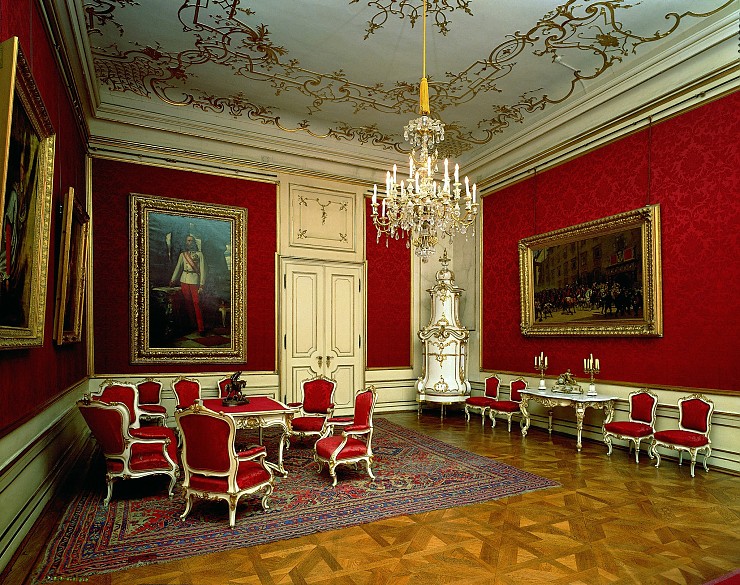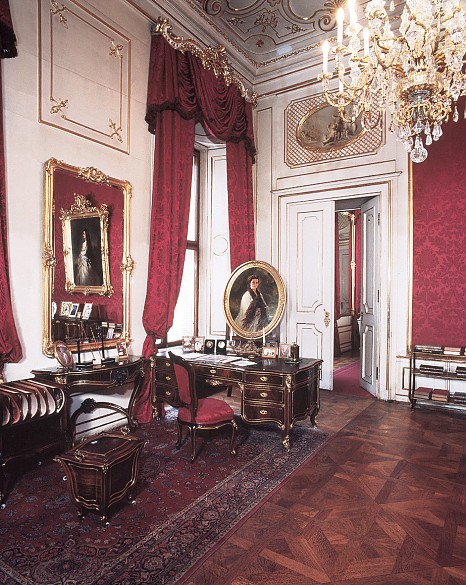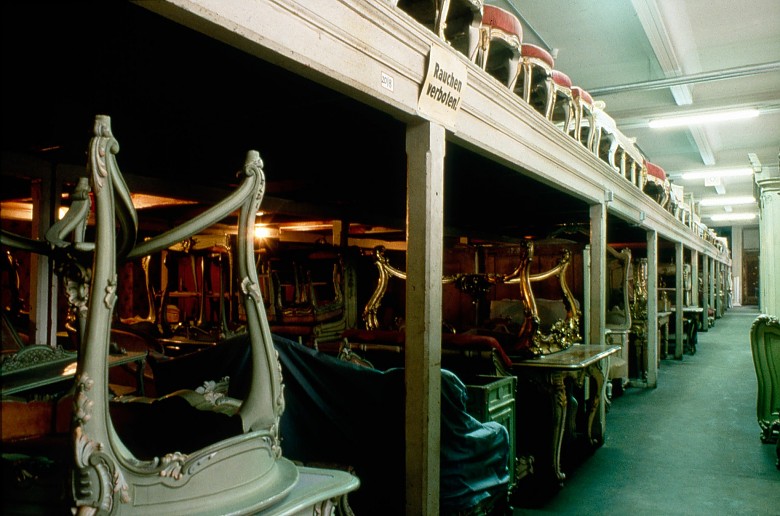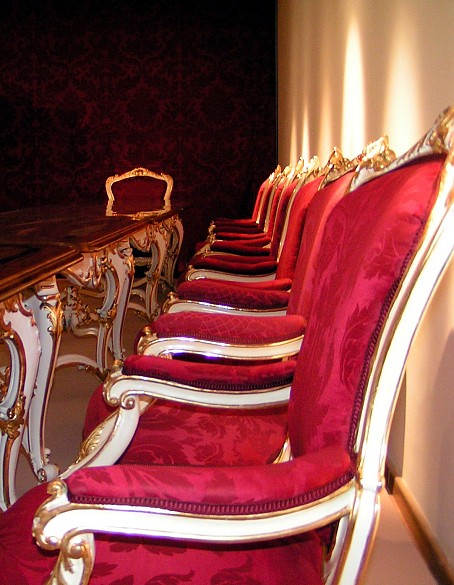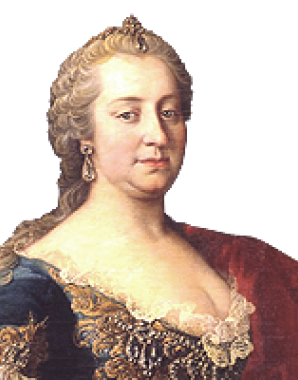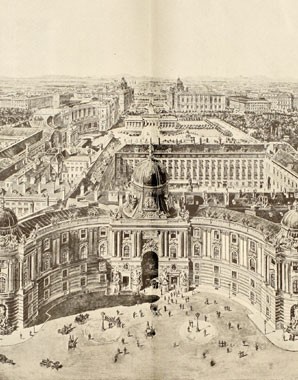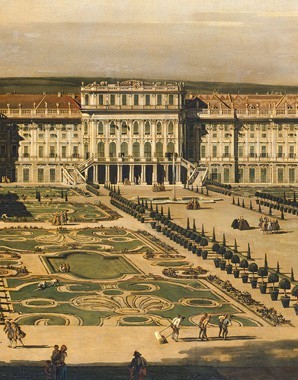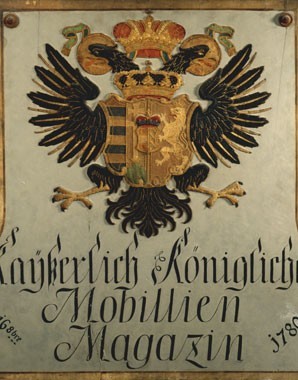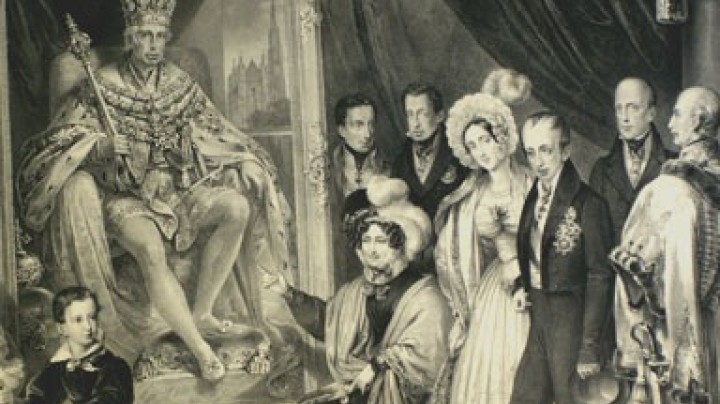Forwards into history – The ‘Maria-Theresian style’
Furnishing of the Habsburg residences in the ‘Maria-Theresian style’ – using the trio of colours red, white and gold – characterizes to this day our concept of imperial decoration. However, such a colour scheme was not just a random choice.
Declared heir to the throne Franz Ferdinand when shown various designs for the Imperial and Royal Ministry of War on Stubenring, including some in the early Viennese Modernist style.The “Maria-Theresian style” is my favourite!
Anyone who has visited the imperial apartments at the Viennese Hofburg, the state rooms of Schönbrunn Palace or perhaps even taken a side trip to see the Innsbruck Hofburg or the Castle District (Hradčany) in Prague, will keep coming across certain recurrent decorative features, for these state rooms, designed during the reign of Emperor Ferdinand I and his successor Franz Joseph, largely display the uniform colour combination of red, white and gold. The furnishings consist of a mixture of original pieces from the eighteenth century, with new items in the opulent forms of the Rococo Revival, a historicizing style based on the formal vocabulary of Jacques-Francois Blondel, eminent architect and art theoretician of the French Rococo; this was referred to in the nineteenth century as the ‘Blondel style’.
This style found its way into the Viennese court under Ferdinand I when, using an ideological association with the reign of Maria Theresa – considered to mark the heyday of Habsburg power – the aim was to gloss over Ferdinand’s personal weaknesses. By choosing Rococo as the prevailing style of Maria Theresa’s epoch, the dynasty was emphasizing the continuity of Habsburg rule, a notion which also fitted well with Emperor Franz Joseph’s conception of himself as monarch.
Thus, until the end of the Monarchy, the ‘Maria-Theresian style’ remained the definitive style in the furnishing not only of the imperial state rooms, but also in the Habsburgs’ private domain. The plethora of objects in this style as a result of the dynasty’s predilection for this manner of furnishing enables us today to reconstruct authentically the private and state apartments of the imperial family with the help of photographs, records and eyewitness accounts.
The Republic of Austria also makes deliberate use of the imperial setting inherited from the Habsburgs; for instance, the Austrian President has his offices in the Leopoldine Wing of the Viennese Hofburg, and items from the Monarchy’s huge stock of furniture are used for important official state receptions and other official events.
